Have you heard of the P.A.R.A. method? It stands for Projects, Areas, Resources, Archives and it answers directly a simple but important question "Where?". Where should I store this piece of information? The question that we usually either ignore or answer incorrectly. As a result, our digital life is chaos, just like our analogue life. With P.A.R.A. our digital life transforms from chaos into 4 small chaoses. Is this even a word? It should be, because it certainly can be a reality.
What P.A.R.A. stands for
Project: Short-term information related to a specific purpose with a deadline. For example, a living room renovation or a university assignment.
Area: Constant concepts that consume your life and never seem to end. Your fitness, your job, your finances, your hobbies.
Resources: Information on topics you might want to reference in the future. Or, in other words, things you think you should save for later but will never read. Like that article you bookmarked yesterday while in the bathroom.
Archive: Throw in here anything that is no longer active from the previous 3 categories. A completed project, dreams that never came true, photos of your ex. Although these you'd better delete completely.
As timeless as it seems, the P.A.R.A. method can become too rigid as you evolve away from your traditional file system or your cloud drive. Using a folder for each of the four pillars is a logical way to break down your knowledge but is it enough? Is this the end game?
In Numenon we don't do folders and we don't do hierarchy. But we can do the P.A.R.A method and potentially combine it with some of our concepts. Please those who enjoy the rigid and liberate those who pursue freedom.
In Numenon, everything is an entry. But not a shallow boring entry. Each one is an entry in active existential crisis. It looks you in the eyes, through your monitor, and asks you: "What am I?". You see the fundamental difference. We switched the question from "Where do I belong" to "What am I". Identity comes before belonging. And once you have an identity, belonging may be an issue resolved naturally by fate.
I am going to explore the different ways that we can structure a Numenon space with the PARA method.
Building a Numenon space with P.A.R.A
I have created a new blank space. Let's say that I am adding an entry for my upcoming website redesign. In P.A.R.A. method this should be considered a Project, so answering the entry's question "What am I", I reply "A Project". I prefer to use singular when using labels, not to be confused with tags.
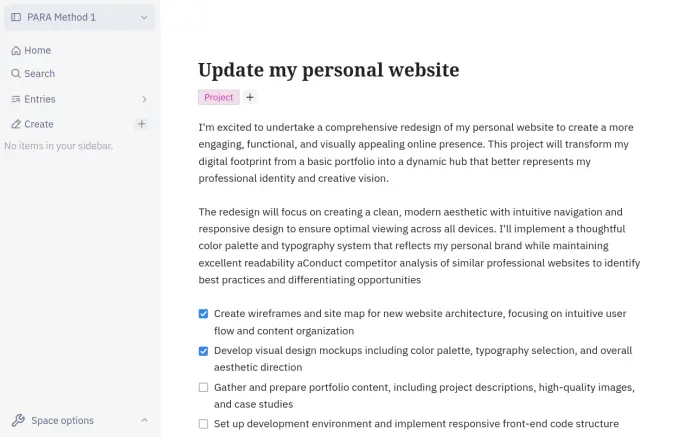
Adding Date field
Remember how we described projects? Short-term information related to a specific purpose with a deadline. It makes sense to add a date field, named deadline.
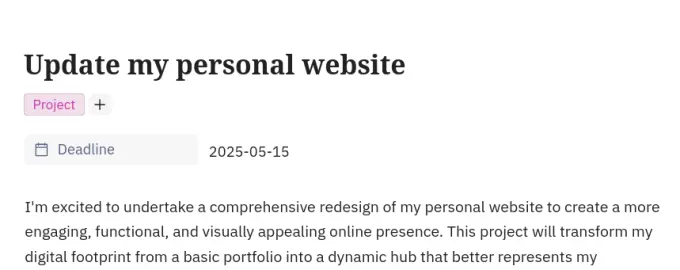
Connecting fields with labels
This is a situation where we can make an interesting decision. We know that most of the projects (possibly all) will have a deadline. It will become boring to add manually the deadline field each time we assign the project label to an entry. We can instruct Numenon to connect the label Project with the field Deadline.
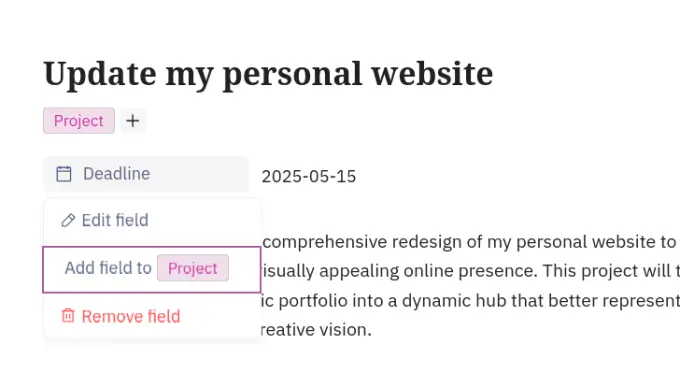
Now, every time I assign the label Project to an entry, it will come with the field Deadline automatically. Connecting fields with labels is one way to start giving structure to your data.
We can add some more entries labelled as Projects and do the same thing for Areas and Resources. Now you may ask, how will I access these information? Where can I find my projects? Take a deep breath and let's dive in.
Dynamic Lists
Everything in Numenon begins with an entry. We are going to create a new entry and name it "Projects". Inside this entry we are going to use the slash commands and choose insert dynamic list.
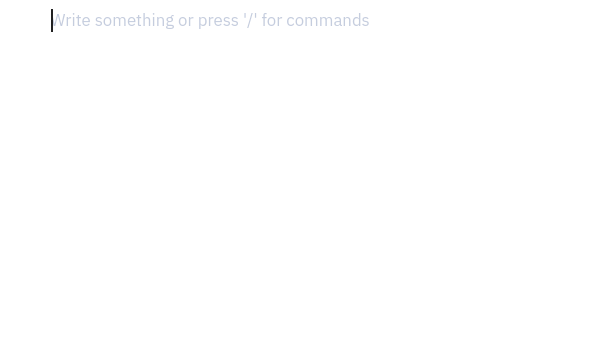
We choose to show all entries with label Project.
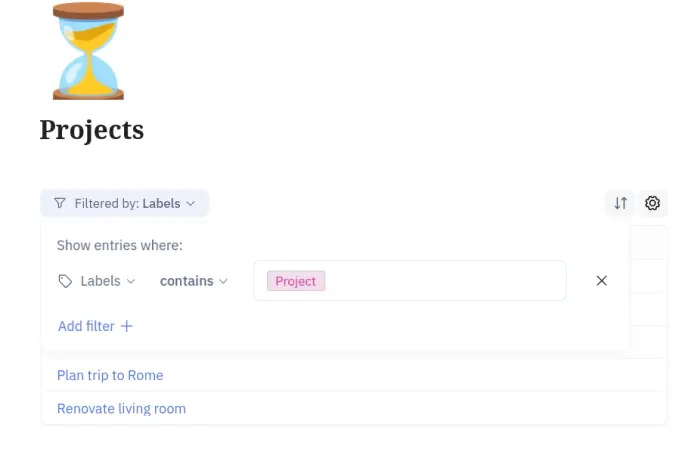
It's that simple. Now you have a list of all your projects. Each time you add a new project this list will get updated automatically. Let's add this entry to sidebar to have quick access.
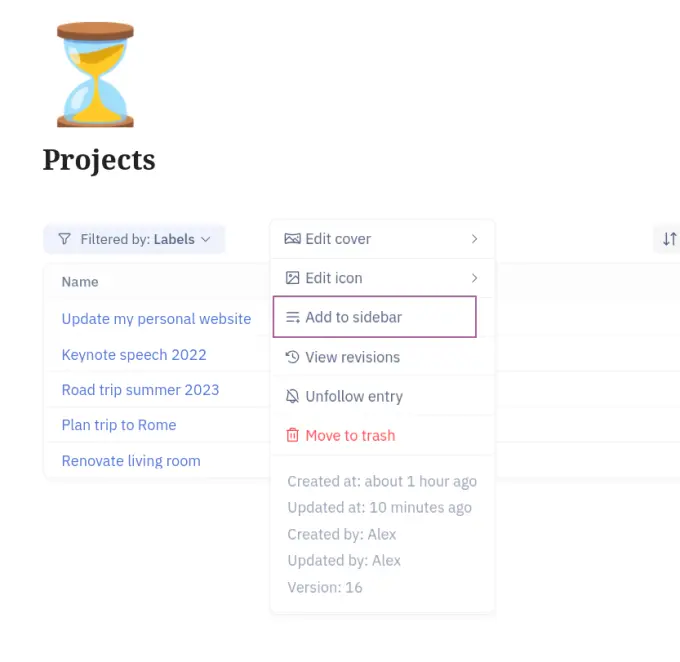
And the final outcome:
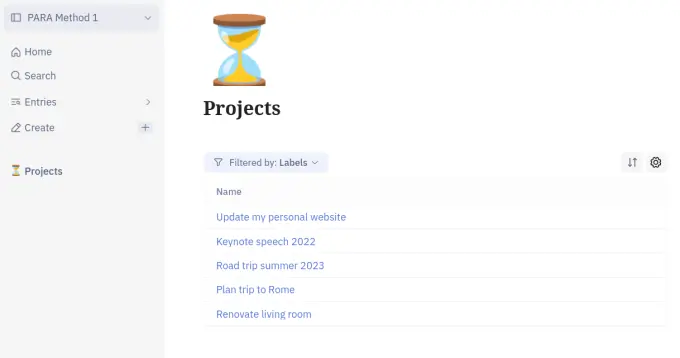
To summarise, I have a link on my sidebar to an entry name Projects that contains a dynamic lists with all my projects. Now I know that each time I create a project it will get listed here automatically.
We are going to repeat exactly the same steps to create the Areas.
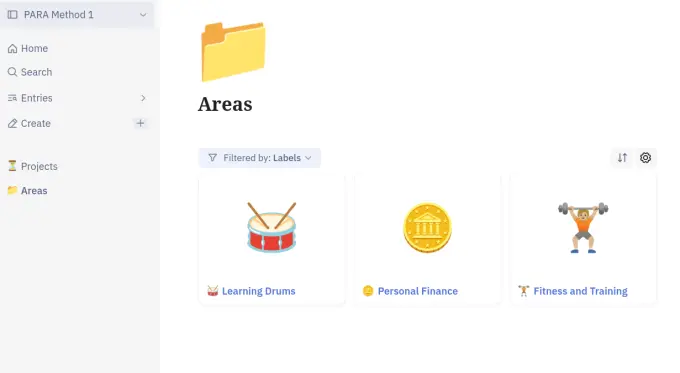
As you see our dynamic list has a different look than the one in Projects, that's because we chose the Gallery layout setting instead of the default table view. It suits it better.
We are going to follow the same steps to do the Resources and the Archives.
The Archives
Here is a good time to talk about the absence of folders. In a traditional system, when you want to archive a completed project, you would move its folders from Projects to Archives. This would do but you would lose one important information. You now don't know the past of the Archived folder. Was it a Project or an Area? Of course you could handle that by replicating the P.A.R.A. structure inside the Archives folder. But is this ideal?
In Numenon we can do better. When you are ready to archive something, the only thing you have to do is apply the label Archive. Now your archived entry will have 2 labels. Project and Archive for example. An entry can have as many labels as you like.
Filter out archived entries
Your question now should be: Won't this entry continue to exist on the Projects dynamic list? And you are right. The only thing we have to do is tell the dynamic list to show all entries that have the label Project, but exclude the entries that have the label Archive.
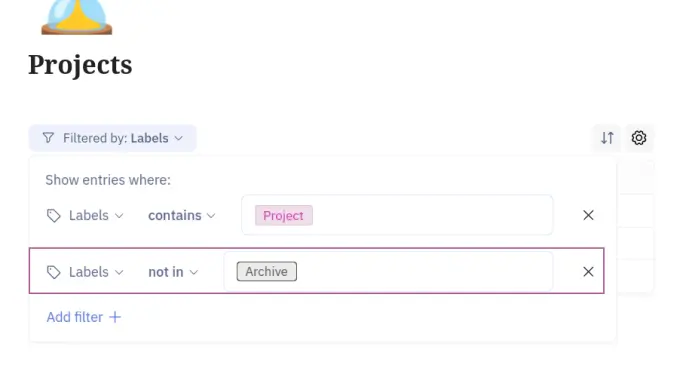
Additionally, we can set the deadline field to be visible in a column and now we have achieved a customised view that fits exactly our needs.
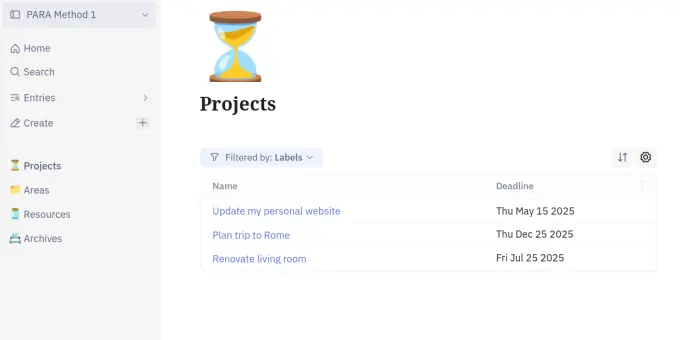
As a free bonus, when you visit you Archives entry, you can add a labels column.
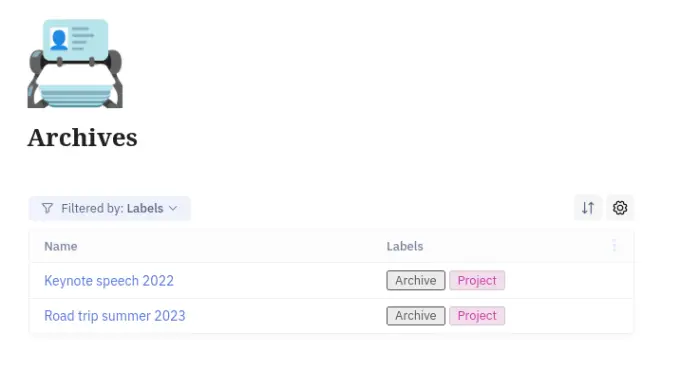
Cool right?
Numenon’s still in the workshop, hammering away. But soon, you’ll get your hands dirty too.
Sign up for updates, early access, and the occasional whisper from the void. No spam. Just the real stuff.